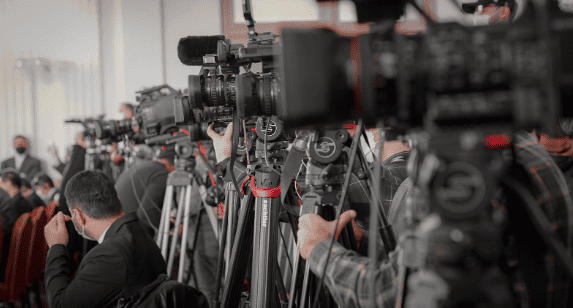How to keep narratives fresh across campaign phases
The holy grail for brands is repeat media coverage, or the ability to stay visible across multiple news cycles. But sustaining interest over time requires more than a one-time headline or a clever campaign launch.
The secret lies in story evolution: the strategic process of keeping narratives fresh and relevant across campaign phases, adapting them to new contexts, and aligning them with evolving media agendas.
Why Do Stories Stall After the First Wave?
Believe it or not, some campaigns can last for years–if you know how to play your cards right. NGP IMC’s decade-long partnership of campaigns with ARC is an example.
But a lot of the time, many PR campaigns fail to sustain the momentum to last because they treat storytelling as a one-off event. The initial announcement (be it a product launch, funding round, or brand partnership) often garners significant attention–which is good!
But once the novelty fades, coverage tends to dry up. Journalists are driven by timeliness and originality. So they rarely (if at all) revisit static stories.
Your audiences, too, will lose interest when narratives fail to evolve.
This stagnation occurs when brands focus solely on the “what”(the news itself) rather than the “why” and “what’s next.” A good PR professional’s task, in this space, is to anticipate these cycles and build a long-term narrative arc that extends beyond the first press release.
What is Story Evolution in PR
Story evolution, here, is a tool for transforming a single moment into an ongoing dialogue between the brand, the media, and the audience.
At its core, story evolution is about narrative agility: the ability to adapt and expand a story as circumstances, public sentiment, and media priorities change. It’s the difference between a headline that flashes and fades, and a narrative that deepens with each new chapter.
Effective story evolution relies on three principles:
- Strategic continuity – maintaining a consistent brand message and purpose.
- Contextual relevance – aligning the story with current trends and conversations.
- Creative reframing – presenting new angles or developments that keep journalists and audiences engaged.
By blending these elements, PR teams can transform campaigns into living narratives: stories that grow, respond, and resonate over time.
Let’s keep these in mind as we dissect how we can stay relevant in each campaign phase. I’ll be a little loose about these phases because I want to get to the heart of how a campaign story can evolve.
What are the Phases of a PR Campaign
Phase 1: The Launch. Crafting a Compelling Origin.
Every enduring story begins with a strong foundation. The launch phase is where PR teams establish the core narrative: the brand’s mission, its “why,” and the unique insight or innovation it brings to the world. This initial story should do more than announce; it should invite curiosity and create room for growth.
The key at this stage is to build in evolution from the start. Journalists are more likely to re-engage with a brand if the initial narrative hints at an ongoing journey.
PR Example:
Personally, I find that sustainable startups have an edge at this because their whole origin story makes for a compelling launch.
To add, launching a new sustainable product, for instance, might focus not just on its features, but on the bigger problem it aims to solve. Is it aiming to solve plastic waste, climate change, or ethical consumption? This positioning creates space for future stories:
- customer success stories
- partnerships
- industry impact updates
And so much more!
Phase 2: The Follow-Up. Deepening the Story
Once the initial buzz fades, the next challenge is maintaining visibility without appearing repetitive. This is where PR professionals transition from announcement mode to story stewardship mode.
The art lies in anticipating the media’s appetite for progress and proof. Journalists love follow-ups that demonstrate real-world outcomes–especially when human stories bring the impact to life.
Follow-up stories should provide new data, milestones, or perspectives that build on the original announcement.
Case studies, behind-the-scenes content, and leadership insights are powerful tools here. They shift the narrative from “what happened” to “how it’s unfolding.”
PR Example:
For instance, if the sustainability startup gains measurable impact (say, diverting a million plastic bottles from landfills), that achievement becomes a new hook. Likewise, if they partner with a global retailer or expand internationally, these updates renew media interest while reinforcing credibility.
Phase 3: The Reinvention. Adapting to Shifting Contexts
A good PR professional recognizes when it’s time to reframe the narrative—not to abandon it, but to evolve it in response to the changing landscape.
In practice, this phase often involves social listening, thought leadership, trend commentary, and reactive pitching. In other words, finding ways to connect a brand’s story to current news without forcing relevance. It’s about maintaining continuity while embracing change.
Even the strongest narratives risk fatigue if they fail to adapt. As time passes, industry trends, cultural conversations, and audience priorities shift.
PR Example:
Let’s go back to our sustainable startup. And let’s say that they opened at the height of the pandemic in 2020. Their competitors, and countless brands in general, pivoted their messaging to focus on resilience, community, and some kind of digital transformation.
Our startup, which originally positioned itself around a broad sense of innovation and sustainability, might reframe its story around a greater community purpose, community engagement, or social contribution. Maybe they can narrow their scope to involve marginalized voices as their campaign evolves.
The underlying message remains consistent, but the context and tone evolve to meet the moment.
Creativity Meets Consistency
One of the most delicate balances in PR storytelling is maintaining creative freshness without losing narrative coherence. Every new chapter should feel surprising yet familiar, reinforcing the brand’s identity while revealing new dimensions.
A useful framework is to think in story arcs:
- Act I (Launch): The introduction. What the brand stands for.
- Act II (Growth): The expansion. How the brand’s impact grows.
- Act III (Transformation): The adaptation. How the brand stays relevant.
Within each act, there’s room for micro-stories:
- leadership profiles,
- community spotlights,
- product updates, or
- social initiatives.
The cumulative effect from slowly building these arcs is a dynamic yet unified brand narrative that naturally attracts repeat media attention.
In Short, Just Keep The Conversation Going
Storytelling is the secret weapon of a campaign that lasts. Brands that treat their narratives as living entities (that are capable of growth, adaptation, and reinvention) are the ones that achieve sustained visibility and credibility through time.
But to get repeat media coverage, the story has to evolve. Repeat media coverage isn’t the result of luck or constantly reinventing your brand from scratch (and that’s exhausting). It’s the outcome of strategic storytelling that respects both the media’s hunger for novelty and the audience’s desire for authenticity.
Want to keep the conversation going, but don’t know how? Partner with NGP IMC! Their track record shows how well they’ve collaborated with so many brands over the years. You can contact them here, or set an appointment here.

Kriztin Cruz is a recruitment and digital marketing professional, freelance writer, hobbyist painter, and frustrated sociologist–with too many things to want and too little time to spare. She graduated with a Psychology degree in 2019 at De La Salle – College of Saint Benilde Antipolo. When she’s not drafting a corporate letter or working on anything digital marketing, you can find her doing the following, but not in this order: reading a good book, scavenging for a good book, sketching, painting, journaling, junk journaling, obsessing over an obscure Czechoslovakian surrealist film (or anything by Miyazaki or Del Toro), cooking, finding a cafe to relax in, and creating new things while a nice documentary plays in the background.


